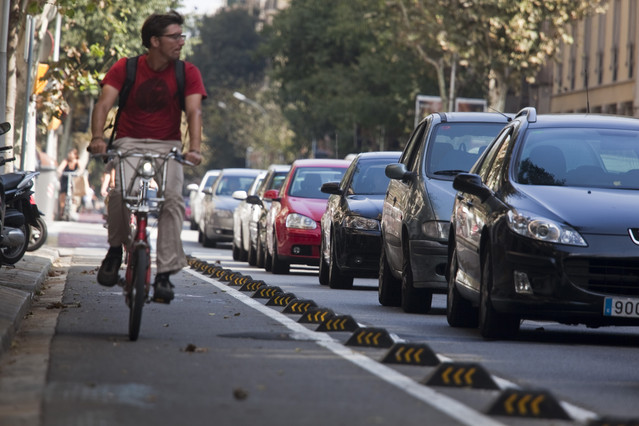Arbol
100 W
I live in Europe. Here, we have a limit of 250w of power. Also, one could not use the motor unless the biker pedals.
However, rules seems to be broken by some brands. For example, the Spanish brand BH offers 350W motors, but "limited to" 250W. I have not been able to find how do they limit the power. Also, several brands offer a "6 km/h" button, which allows the motor to work without pedaling up to 6km/h.
Not being a lawyer, these two characteristics seem at odds with European regulations. But those brands have a reputation, so if they do that, it means it is somewhat legal.
My question is as follows:
Is it possible to have a big motor (with big defined as more than 250W) but limiting it to 250W for open roads? This limitation could be done for example with a Cycle Analyst, having a Legal or Eco program defining amperage to limit power to legal figures. And then there would be another, unlimited program, not to be used under open roads.
I would like to ask the opinion of people with some experience on this subject, since this issue seems highly non-intuitive (like the 350W or the 6km/h issues). Common sense does not seem to work well here. Explicit rule of law is what is needed.
I am not arguing at all to use this as a trick to use big amounts of power on open roads, by stealth. At least in my city, more than 25km/h is a serious risk, and 250W is probably logical. I am talking for example to go out on a weekend to the hills, out of tarmac, and be able to have higher power.
Opinions?
However, rules seems to be broken by some brands. For example, the Spanish brand BH offers 350W motors, but "limited to" 250W. I have not been able to find how do they limit the power. Also, several brands offer a "6 km/h" button, which allows the motor to work without pedaling up to 6km/h.
Not being a lawyer, these two characteristics seem at odds with European regulations. But those brands have a reputation, so if they do that, it means it is somewhat legal.
My question is as follows:
Is it possible to have a big motor (with big defined as more than 250W) but limiting it to 250W for open roads? This limitation could be done for example with a Cycle Analyst, having a Legal or Eco program defining amperage to limit power to legal figures. And then there would be another, unlimited program, not to be used under open roads.
I would like to ask the opinion of people with some experience on this subject, since this issue seems highly non-intuitive (like the 350W or the 6km/h issues). Common sense does not seem to work well here. Explicit rule of law is what is needed.
I am not arguing at all to use this as a trick to use big amounts of power on open roads, by stealth. At least in my city, more than 25km/h is a serious risk, and 250W is probably logical. I am talking for example to go out on a weekend to the hills, out of tarmac, and be able to have higher power.
Opinions?




